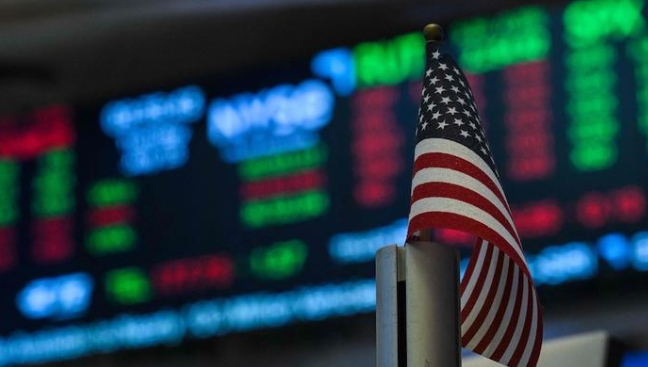
Since Trump returned to the White House, the economic impact of his "whirlwind" policies has gradually surfaced. The latest data shows that the negative effects of tariff measures and immigration policies are intertwined and fermenting, pushing up inflation, suppressing job growth, and casting a shadow on the US economic outlook.
The tariff measures introduced by the Trump administration are being transmitted through the supply chain layer by layer, gradually showing their inflationary effects. In June, the US CPI rose by 2.7% year-on-year, and the prices of core commodities accelerated, especially the price increases of categories such as furniture and toys that are more affected by tariffs. Although energy and food prices are the main reasons for the increase in CPI that month, the "super core inflation" excluding these factors rose by 0.12% month-on-month, indicating that the cost of tariffs has penetrated from the corporate side to the consumer side. Previously, importers temporarily alleviated the impact of tariffs by stockpiling in advance and inventory buffering, but with the end of the 90-day tariff suspension period and the addition of a new round of tariff actions, corporate inventories have gradually been consumed, and cost pressures have nowhere to be passed on, so they can only raise prices. Goldman Sachs economists estimate that companies will pass on about 70% of tariff costs to consumers, pushing prices to continue to rise. If tariffs remain high, it is estimated that each family will lose about $2,800 in annual income in 2025, and the overall inflation rate may be difficult to fall back to a low of 2.3%.
Trump's "one-size-fits-all" immigration policy is having a direct impact on the labor market. Data show that since he tightened immigration restrictions, the number of foreign-born workers has continued to shrink, with the largest drop since 2020 in May. Immigrant labor plays a key role in the US economy: between 2020 and 2025, 5.5 million immigrants joined the labor force, filling gaps in industries such as construction, agriculture, and manufacturing. Today, the slowdown in immigration inflows not only directly reduces employment opportunities, but also leads to labor shortages, pushing up labor costs and exacerbating inflation. Deutsche Bank warned that the impact of the decline in the number of immigrants on the economy may exceed tariff measures because it directly weakens the elasticity of the labor market. In addition, the social conflicts caused by immigration policies have also increased economic uncertainty, further inhibiting corporate investment and expansion willingness.
The double squeeze of tariffs and immigration policies is pushing the US economy to the brink of stagflation. On the one hand, tariffs push up prices, while the reduction in immigration leads to insufficient labor supply and reduced productivity. The two together put pressure on the consumer side. The annual inflation expectations of ordinary people have risen to 4.9%, the highest since 1993. The decline in consumption willingness will weaken the core driving force of the US economy. On the other hand, the labor shortage forces companies to raise wages, exacerbating cost pressures and forming a vicious circle. The Federal Reserve faces a dilemma: inflationary pressure limits the room for interest rate cuts, while the economic slowdown requires policy stimulus. Most institutions predict that the US GDP growth rate will drop sharply from 2.8% last year to 1.3%-1.7% in 2025, and the risk of stagflation has become a real threat.
Although the stock market has temporarily maintained a high level, the bond market has taken the lead in responding: the 30-year Treasury bond yield has exceeded 5%, reflecting investors' concerns about the economic outlook. The "uncertainty premium" of Trump's policies continues to accumulate, and corporate investment decisions are becoming more cautious. Historical experience shows that the US economy has relied on inventory buffers and policy adjustments to resist external shocks, but the pressure caused by internal policies this time is more structural. If tariffs are not adjusted and immigration restrictions are not relaxed, economic resilience will eventually be exhausted. More seriously, if other countries adopt retaliatory tariffs, US exports will shrink further, and employment and growth will be further impaired.
The economic manifestation of the Trump effect is by no means an isolated phenomenon, but the inevitable result of a combination of policies. Faced with the dual dilemma of inflation and employment, the US economy is at a crossroads: if policies do not change direction, the risk of stagflation will continue to accumulate, and the possibility of economic disorder will increase significantly. In the coming months, markets and policymakers will pay close attention to the deepening of the tariff transmission effect and the deterioration of the labor market to assess the long-term destructive power of this "Trump cycle" on the US economy.

The United States announced on Monday its commitment to provide 1.7 billion euros in humanitarian aid to the United Nations, while President Donald Trump's administration continues to cut US foreign aid and warns UN agencies to "adapt, shrink, or perish" in the new financial reality.
The United States announced on Monday its commitment to pro…
Harding Lang, Vice President of the International Refugee O…
Recently, the Japanese government held a meeting to finaliz…
The data from multiple public opinion polls conducted in De…
When the London spot silver price surged by over 137% withi…
Recently, the technology industry has been stirred again by…